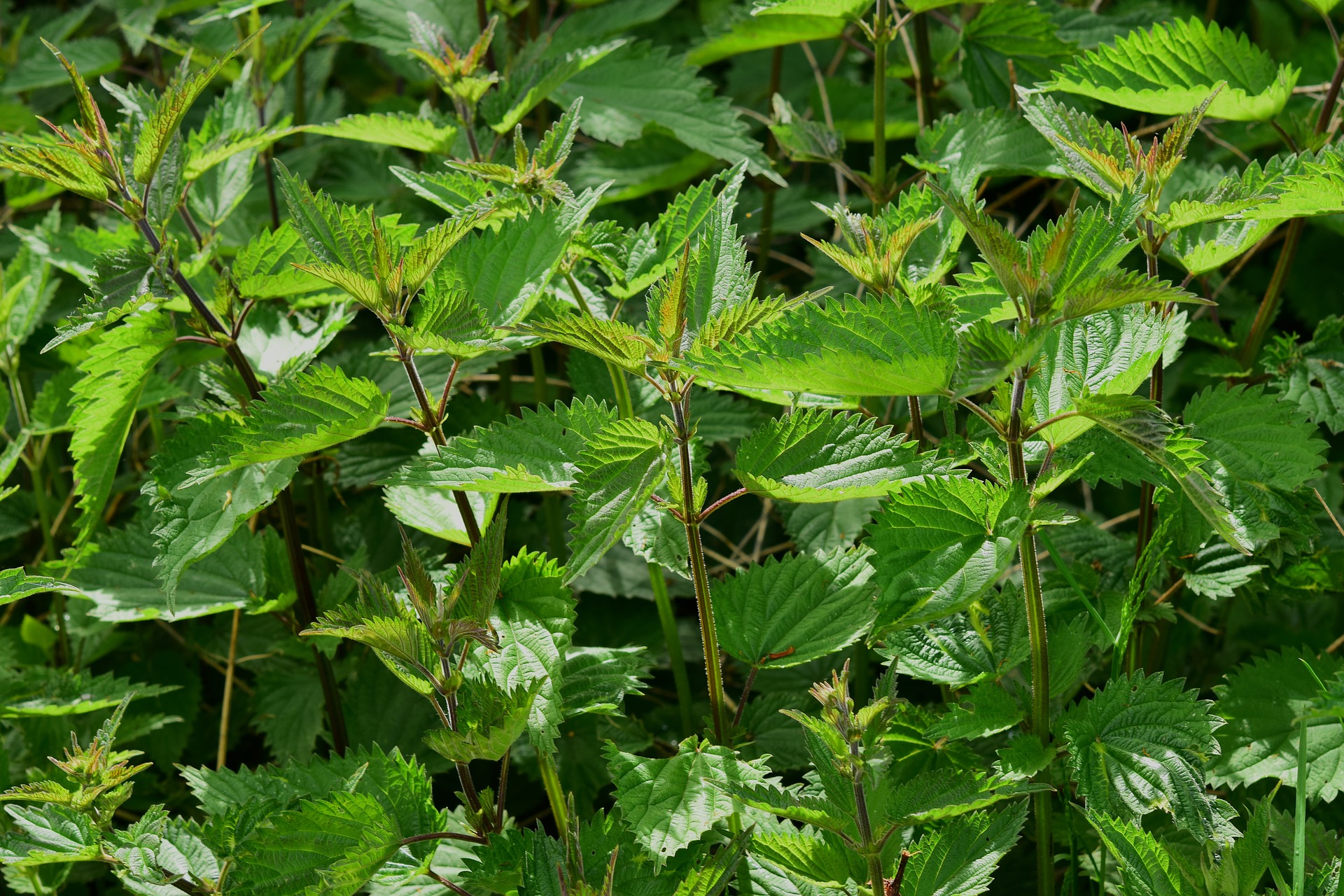Experiential learning probably resulted in nettles being one of the first plants we could identify; Urtica dioica – touch ‘em and it ‘urts. When I was growing up, even our little wire-head fox terrier knew to keep away from them.
Urtica dioica - common, or stinging, nettles
In the UK, the most widely go-to antidote to nettle stings is to rub a crumpled dock leaf (Rumex obtusifolia) over the sting. Anecdotally, this calms the skin’s reaction to the histamine and other complex chemicals delivered by the stinging-hairs, or trichomes, on the nettle leaves.
However, on looking into why this might be so, I have found minimal scientific evidence to explain the calming effect of dock leaves on nettles stings, but never underestimate the placebo effect, when you are out for a country walk with young children wearing shorts.
It’s important to note that nettles have a high habitat value, supporting some of our favourite butterflies, such as the small tortoiseshell and peacock. They are also a valuable food source for seed-eating birds.
Tortoiseshell butterfly larvae
That said, if you did want to cut back on the stingers in your garden, they needn’t be consigned straight to the municipal green waste bin. You can turn them in to a highly nutritious organic fertiliser for your garden.
Make your own nettle Fertiliser
When diluted and watered in, home-made nettle fertiliser is rich in nitrogen and also provides chlorophyll, magnesium, sulphur, iron, potassium, copper, zinc and calcium, and a whole host of vitamins. It also makes a good compost accelerator. Here’s how to make your own;
You will need;
· Gloves (preferably long);
· Nettles;
· Garden shears;
· A bucket;
· A brick;
· Some patience.
Step 1: Put on your gloves (!) and gather your nettles. Young stems are best. Remove the roots.
Step 2: Bruise and scrunch the nettle stems as you squash them into the bucket. Use the shears to chop them up.
Step 3: Weigh the nettles down with the brick, and immerse them with water.
Step 4: Move the bucket to a far-off corner of the garden (it gets smelly!) and leave it for four weeks.
Step 5: When the mixture is ready, strain off the liquid and transfer it to an empty screw-top bottle. Then give your garden a good water, in the normal way.
Step 6: Dilute the fertiliser in your watering can, using no more than one-part nettle fertiliser to ten parts water. Remove the watering can rose and apply the dilute fertiliser to the soil immediately surrounding the base of your plants, fruit and veg, throughout the growing season. You can also use it as a foliar feed if you dilute it to one part fertiliser to twenty parts water.
Your garden will appreciate the fertiliser, and it won’t cost you a penny.



